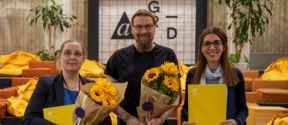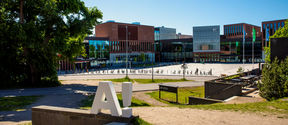€3,2 m funding boost to Aalto to develop and research radiation detectors
The Academy of Finland’s funding decisions on the RADDESS Academy Programme have been announced. Starting next year, RADDESS (Radiation Detectors for Health, Safety and Security) will provide funding to 13 research consortia seeking groundbreaking initiatives for the development of new radiation detection technologies especially in a medical, safety or security context. The Academy’s funding budget for the programme is 10 million euros. Aalto’s share of it was appr. 3,2 million euros, which is 30% of the whole funding budget.
The following Aalto professors received funding for their projects:
- Hakonen, Pertti and Möttönen, Mikko (Aalto SCI, epartment of Applied Physics): Ultrasensitive bolometers for security applications / Consortium: BOLOSE
- Halonen, Kari (Aalto ELEC, Department of Electronics and Nanoengineering): Compact Millimeter-wave Radiometers -MilliRAD / Consortium: MilliRAD
- Hostikka, Simo (Aalto ENG, Department of Civil Engineering) and Hannula, Simo-Pekka (Aalto CHEM, Department of Chemistry and Materials Science): Novel measurement and sensing technologies for thermal radiation of unwanted fires / Consortium: THERAD. Hostikka is the project lead.
- Ikonen, Erkki (Aalto ELEC, Department of Signal Processing and Acoustics): Universal electromagnetic radiation detector / Consortium: UNIDET
- Oksanen, Jani (Aalto SCI, Department of Neuroscience and Biomedical Engineering): Thin-film optoelectronics for sensors and surveillance
- Sun, Zhipei (Aalto ELEC, Department of Electronics and Nanoengineering): LAYERED 2D MATERIALS BASED THZ SPECTROSCOPY AND IMAGING / Consortium: LAMARS
- Särkkä, Simo (Aalto ELEC, Department of Electrical Engineering and Automation): Multispectral photon-counting for medical imaging and beam characterization. / Consortium: HALS
The funded projects study, among other things, novel device-driven and functional radiation detection systems in areas of both health and safety. The projects will generate new knowledge on, for instance, cancer therapy and cerebrovascular diagnostics and the development of surveillance cameras.
The development of novel measurement methods consists of multidisciplinary basic research that effectively combines, for instance, detector technology, materials science, electronics, signal processing, mathematics, data collection systems and systems design. In addition, the research will require an understanding of the objects being measured and of their special characteristics. As regards the application areas of the research, the focus is on applications for medicine and industry.
Read more news

Aalto Open Science Award ceremony brought together Aaltonians to discuss open science
Last week we gathered at A Grid to celebrate the awardees of the Aalto Open Science Award 2023 and discuss open science matters with the Aalto community.
Seed funding available to boost collaboration between Aalto, KU Leuven and University of Helsinki
Aalto University, KU Leuven and the University of Helsinki launch the 2nd exploratory seed funding call to explore research collaboration possibilities. The funding call is open until 10 September 2024.
Professor Peter Hans Matthews works as a Fulbright-Aalto Distinguished Chair scholarship holder at the Department of Economics
Fulbright programmes and scholarships are highly appreciated in the United States